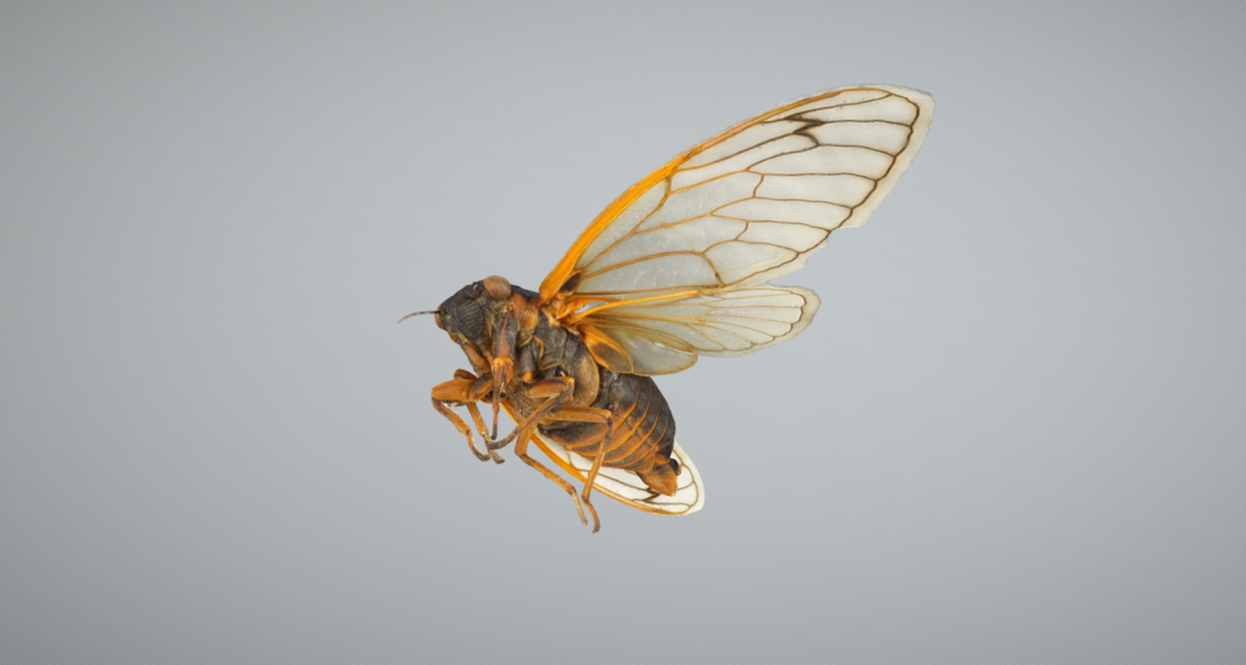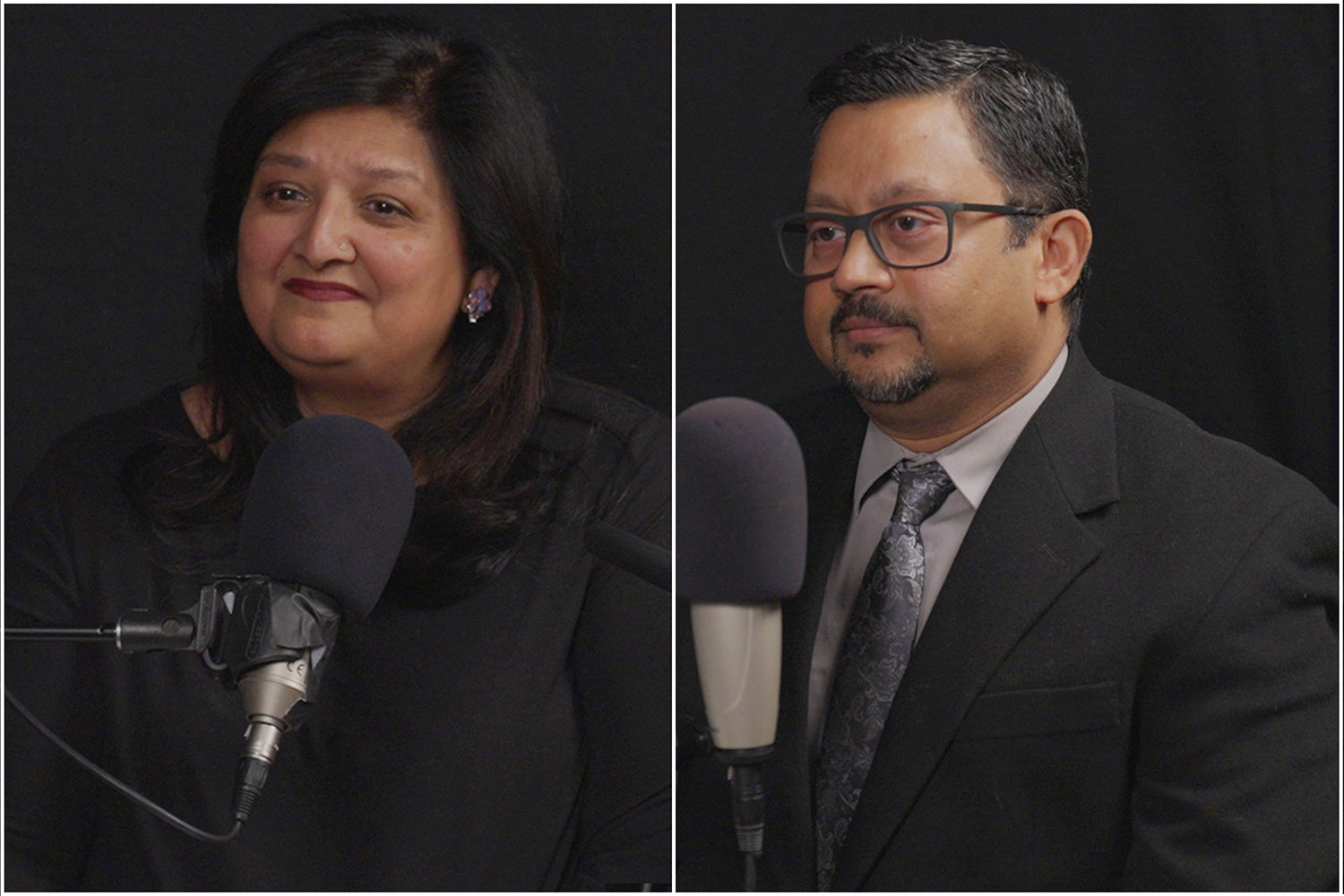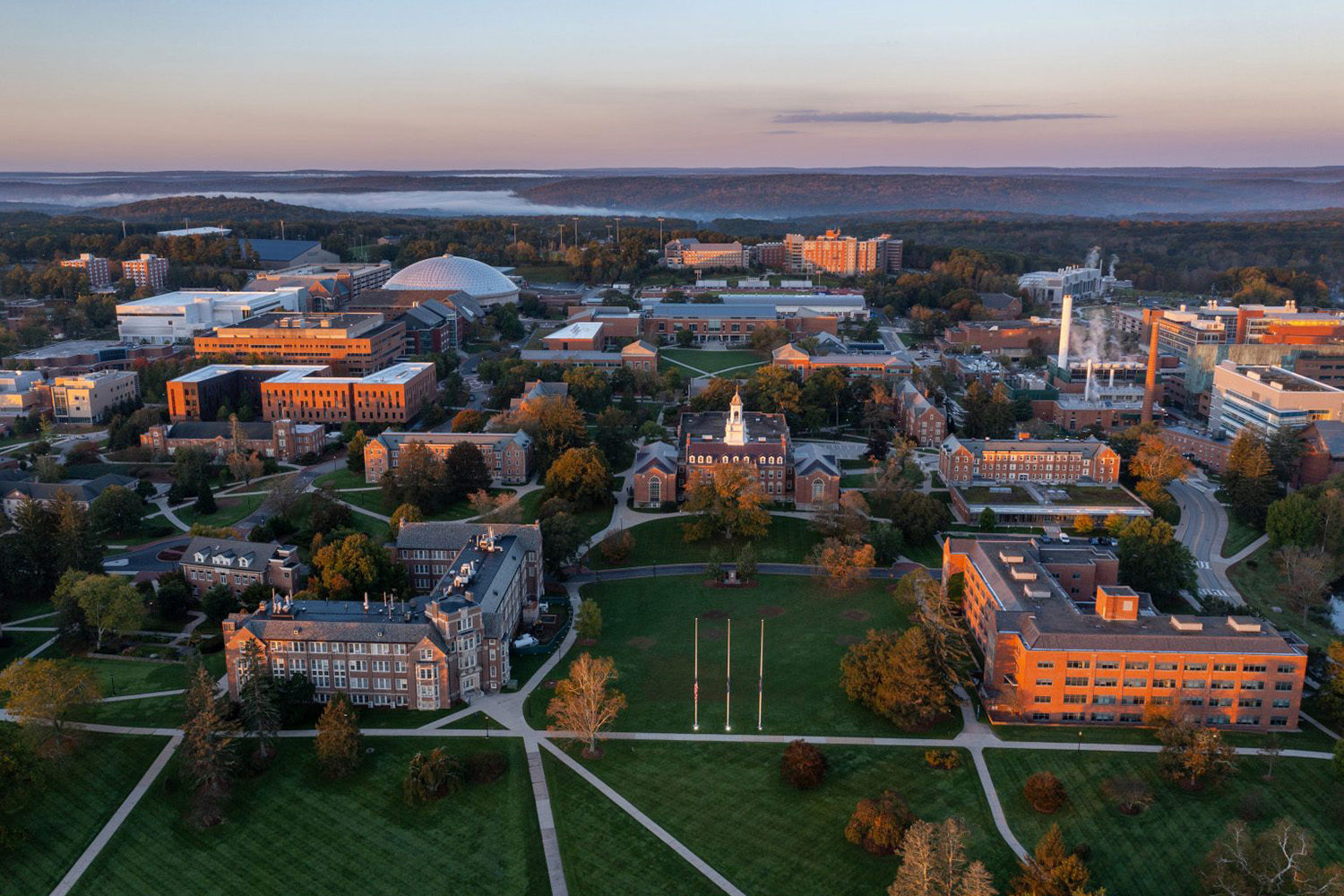An innovative process is making 3D data of cicadas available to the world, just in time for this year’s rare co-emergence of Brood XIX and Brood XIII. Head of Digital Imaging and Conservation Michael J.Bennett directs UConn’s Digital Imaging Lab, where he has developed a technique to render two-dimensional images into high-resolution three-dimensional models of objects and specimens.
Bennett was inspired after he collaborated with Anthropology Professor Christian Tryon to capture images of North African stone points and then he read a story featuring Department of Ecology and Evolutionary Biology researchers and cicada experts Chris Simon and John Cooley on the heels of the Brood X emergence in 2021.
“It clicked that this technique could also be applied in a different context using insect specimens. I reached out to Chris and John about a collaboration, and it has been super working with them ever since,” Bennett says.
Bennett explains that the Digital Imaging Lab has an applied research focus as part of its broader mission where they both experiment with and deploy advanced imaging techniques, and the project was an opportunity to apply this particular workflow in a new way. The 3D renderings represent specimens of both sexes of all the North American periodical cicada species and allow for precise measurement, visualization, and annotation of morphological features, and since they are openly shared, the models can be used in both the classroom and research environments.
The technique to create the models is a novel combination of macro photography and extreme close-range photogrammetry.
“I wouldn’t say that we were the originators of that combination, but I think we’ve taken the blend of macro photography and photogrammetry onto a new path of automation and computation. We have refined the technique to consistently create 3D object data that are accurate to the sub-millimeter level,” says Bennett.
So far, Bennett has sampled and compiled data from 16 specimens. Considered in their entirety, the resulting raw datasets include thousands of source images and currently a total of 6.3 terabytes of data, which he has uploaded into the Internet Archive for open access. His lab also simultaneously works on archiving the smaller 3D model files that are rendered from these original datasets. These derivative files are freely accessible in turn on the UConn Library’s Digital Imaging Lab Sketchfab website.
Visitors can easily interact with the rendered models online, which can be zoomed, panned, and dynamically illuminated, giving the users an almost lifelike experience of physically handling the object but at much greater magnifications than normal human sight allows.
This work is already garnering attention. Bennett has published journal articles on his methods, and has begun to give presentations on the technique so that others can learn and apply these same workflows for their own uses. He recently spoke at the Getty Center about the project’s original data acquisition, rendering, and management pipelines. UConn Library Head of Communication and Marketing Jean Cardinale says the project’s resulting outputs are also attracting the interest of 3D modelers and game designers:
“This has been a successful project and one that shows that libraries can be valuable creators of original digital content. It’s a combination of a unique project for libraries using cutting-edge technology to support research and making it possible to look at cicadas in an entirely new way.”
One big challenge is data storage, and Bennett hopes the technique will get more efficient in terms of its needed sampling rates and computation.
Right now, data acquisition is the main bottleneck because of the sheer number of needed source images. This scale of image acquisition is simply a response to the laws of physics and optics and the limitations that they exert, says Bennett. Capturing such a high level of detail so close to a subject leaves a single image’s depth of field razor thin. In response, multi-image methods called focus bracketing and stacking are used to collectively capture the specimen’s entire width and depth in focus. One benefit of his current system design is that Bennett can pre-program the photography setup to automatically take the processes’ needed photos overnight and unattended.
When all the images are shot and focus stacked, photogrammetry software is then used to convert the 2D photos into 3D data. In total, Bennett says the entire process can take about five days for each specimen at the high resolutions that he is working at.
Simon is excited about having these images on the web and is hopeful that more specimens, perhaps some collected during this year’s emergence, can soon be added to the archive and to the Biodiversity Research Collections Periodical Cicada Information website, which is a wealth of information about these insects.
“We will be collecting fresh specimens to get some nice, brightly colored ones. It’s great that people can see these models up close, and they can interact with them. It is amazing technology. Eventually, I assume as computers get faster, and the technology gets more developed, maybe we can add more specimens,” says Simon.
The models may help inform future research or help those interested in identifying periodical cicadas. Either way, Bennett says the data are available for others to repurpose in new and interesting ways. His future and ongoing archiving efforts include aerial imaging of campus buildings. He is an FAA-certified drone pilot and combines aerial photography with photogrammetry to create 3D data of some of the signature structures on campus.
“So far we’ve done the Homer Babbidge Library, the Wilbur Cross Building, the Albert E. Waugh Sundial, the Farwell Barn, and I’m looking forward to doing more. Since it is so close to the airport, I’d ultimately hope to get clearance from air traffic control down in Groton to do the lighthouse at Avery Point. So, these are the types of projects that are on the horizon.”
The images Bennett has captured are compelling, and the models themselves tell the story best. Visit the UConn Library Sketchfab page to explore the results yourself, and Bennett recommends viewing them with as large and high-resolution display as possible to get the full effect.



